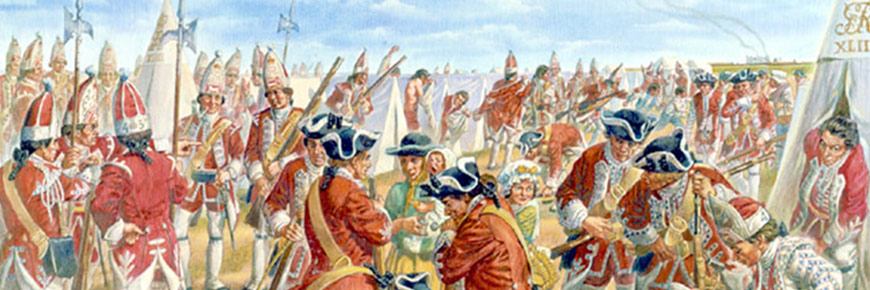
The siege of 1755
Fort Beauséjour – Fort Cumberland National Historic Site
The tension exploded on June 2, 1755, when Lieutenant-Colonel Robert Monckton, 270 British regulars and about 2,000 soldiers from New England landed with heavy artillery on the Isthmus of Chignecto. Two days later, after a skirmish at Pont-à-Buot, the British troops crossed the Missaguash River. By approaching the fort from the north, Monckton destroyed the communication line to Baie Verte.
The following day, his troops were able to advance and set up camp at Butte-à-Mirande, a hill located about two kilometres from the fort. A number of altercations took place between enemy patrols over the course of the next few days. On June 12, Monckton reached the batteries surrounding the fort.
Surrender of Fort Beauséjour
The British had assumed that the French would be relying on the support of 1,000 Acadian men plus the garrison of 150 Compagnies franches de la Marine soldiers commanded by Louis du Pont Duchambon de Vergor. However, at the time of the siege there were only about 250 or 300 Acadians, as well as a number of Indigenous people, with the garrison inside the fort.
After bombarding the fort for several days, the British launched a shell that killed the occupants of one of the casemates. Three Acadians lost their lives during the siege. With no reinforcements, Commandant de Vergor was obliged to surrender and on June 16 the British flag was raised at Beauséjour. The Acadian defenders handed over their weapons and were released to join their families. The British took over the fort which was renamed Fort Cumberland.
Next part: The great upheavalRelated links
- Long before the Fort: Acadian settlement
- First warfare
- Zone of contention, place of growth
- The construction of a fort at Beauséjour
- Life inside the Fort during the French regime
- The Acadians and the fort
- Tensions of the 1750s
- The deportation of the Acadians
- The start of the British occupation
- Settlers from Yorkshire
- The 1776 siege of Fort Cumberland
- Changes to the fort after the second siege
- Creation of the national historic site
- Archeological digs
- Date modified :